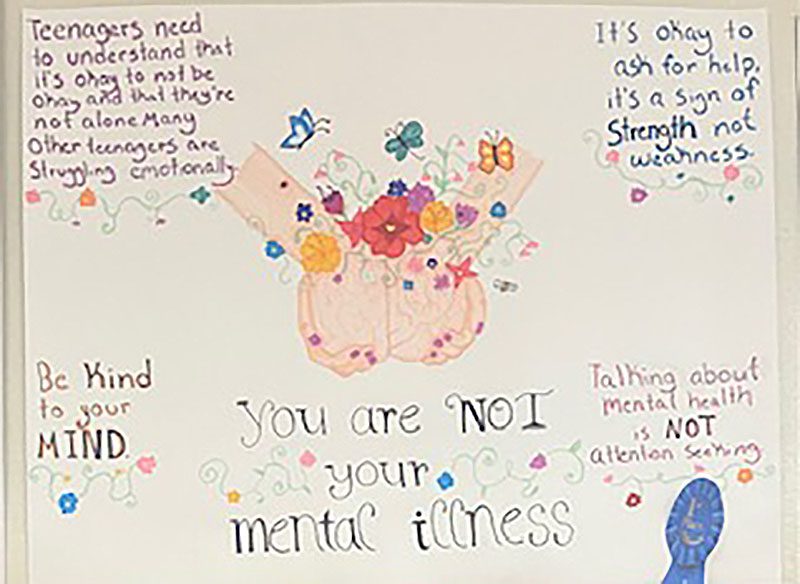In partnership with mental health, law enforcement, and juvenile justice agencies, ESD 112 provides Student Threat Assessment to school districts
About
Student Threat Assessment System
The RSSC student threat assessment program works proactively with school staff and community partners to; 1) Assess threats and determine the level of concern and action required; 2) Organize resources and strategies to manage situations involving people who pose threats to others; and 3) Maintain a sense of psychological safety within the community.
Our Mission
To provide a comprehensive, multidimensional system to assist schools in addressing situations that may pose a threat of harm to others and to provide options for intervention.
Goals
- Keep students who are at risk from committing violent acts in school.
- Help protect students and staff members from potential violence.
- Provide a student-specific safety plan utilizing community resources to mitigate the threat of violence.
- Involve parents in the threat assessment process.
- Document the program’s effectiveness in dealing with students who make threats of violence, including student academic and behavioral success.
- Work in collaboration with community partners to coordinate resources for the safety and well being of youth, families and communities.
Objectives
- Assess threats of potentially harmful or lethal behavior and determine the level of concern and action required.
- Organize resources and strategies to manage threatening situations that pose a risk of harm to others.
- Maintain a sense of psychological safety among our schools and community.
- Reduce the number of expulsions for students who can be maintained safely in the school environment.
Services & Forms
Services Include:
- Training key staff in schools regarding the Level I threat assessment process of assessing behaviors or situations of concern.
- Coordination of Level II threat assessments in which a trained multidisciplinary team meets with key school staff to assesses risk and assists in management and intervention planning.
- Preparation of timely written threat assessment summaries following the Level II assessment process.
- Consultation, coordination and follow up as services provided
Level 1 Assessment
School staff are trained to complete the Level 1 Threat Assessment. Components of the Level 1 Threat Assessment include the Level 1 Protocol, Parent Interview, Staff questionnaire, Student Interview and Student Witness form. Upon completion of the Level 1 Threat Assessment, a safety support plan are developed. In addition, a referral may be made for a Level 2 Threat Assessment.
Level 2 Assessment
When a Level 2 Threat Assessment is requested, the team expands to include community partners who have been trained in Threat Assessment and Threat Management. These partners may include members from law enforcement, mental health, juvenile justice and children’s services. They provide recommendations for resources and additional support in developing a plan for the student with the goal of increasing safety for the student, school and community.
Experienced Staff
Our staff has a unique skill set of experience in threat assessment, mental health, prevention and intervention, and special education. We are knowledgeable about community and district resources, and participate in community teams and initiatives focused on improving youth access to services and supports.
Staff expertise deepen the scope of the Threat Assessment Program:
- Provides informative Level I consultations and training for school administrators.
- Shifts the threat assessment focus to more school support at Level I which empowers school staff to handle difficult situations.
- Further equips building staff with more evaluative tools to assess sexual incident and self-harm and suicide.
- Integrates regional mental health case management (Child Protective Team and Managed Care Organizations) which leverages additional resources for students.
- Facilitates information sharing among districts by tracking and notifying district safety officers of high risk students moving between districts.
Level 1 Documents
These forms are to be used by those who have been formally trained in the SK Cascade Threat Assessment System.
Are you a district administrator?
“Fillable” forms can be completed electronically and saved. Or simply print the form and fill it in by hand.
iPad Users: Fillable forms are available on your iPad using the free Adobe Reader App, available from the iTunes Store. Once downloaded you will see an option to "Open With Adobe Reader" which will allow you to fill in the boxes and send via email to your account.
Resources
Student Threat Assessment Tools & Resources
Parent Frequently Asked Questions (FAQ)
Documents and Tools
- Quick Guide to Threat Assessment
- When to Convene a School Team to Conduct a Level 1 Threat Screening
- Student Threat Assessment Program Flowchart
- Threat Response System STAT Typical Level One Sequence: A Guide for the School Administrator
- School Safety Brochure
- Firearms Safe Storage Fact Sheet
- Bullying Prevention
- Five Facts About Mass Shootings
- Grooming Behaviors Guide
- Developmentally Normative Behavior
- Info Flyer Spanish
- Info Flyer English
- WATCH D.O.G.S.-Dads of Great Students-Positive Male Role Models-Elementary/Middle
- Invent2Prevent-Student Developed Violence Prevention-High School/College
Program Contacts
Who to Contact
Read the latest news
- May, 2025 Regional School Safety Center News Spring 2025
- February, 2025 Regional School Safety Center News Winter 2025
- November, 2024 November Regional School Safety Center News
- September, 2024 Regional School Safety Center News
- June, 2024 Regional School Safety Center News Summer 2024
- March, 2024 Regional School Safety Center News Spring 2024
- January, 2024 You're Invited! Regional Forum on Standard Response Protocol
- December, 2023 Regional School Safety Center News Winter 2023-24
- September, 2023 Regional School Safety Center News
Newsletter Signup
If you’d like to receive updates about the RSSC and services, please provide your information below.






 ESD 112 equalizes educational opportunities for learning communities through innovative partnerships, responsive leadership, and exceptional programs.
ESD 112 equalizes educational opportunities for learning communities through innovative partnerships, responsive leadership, and exceptional programs.